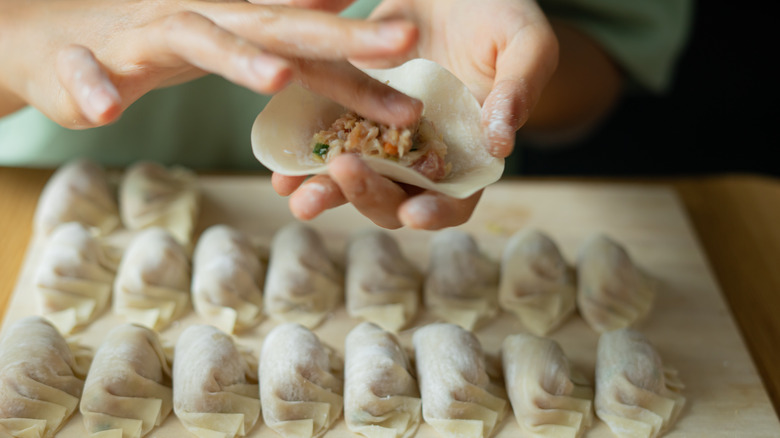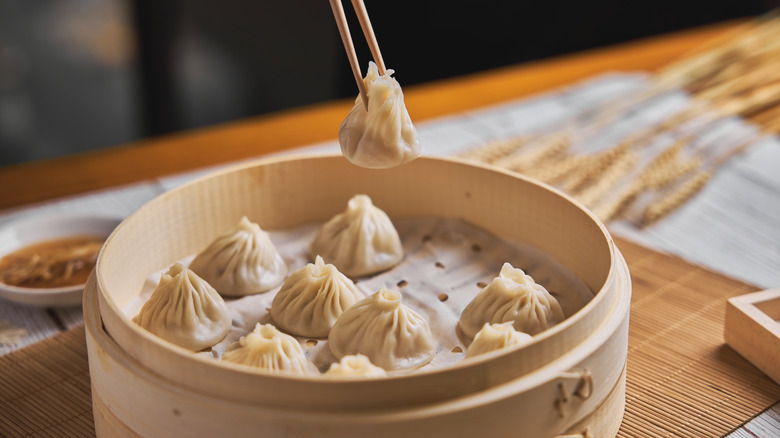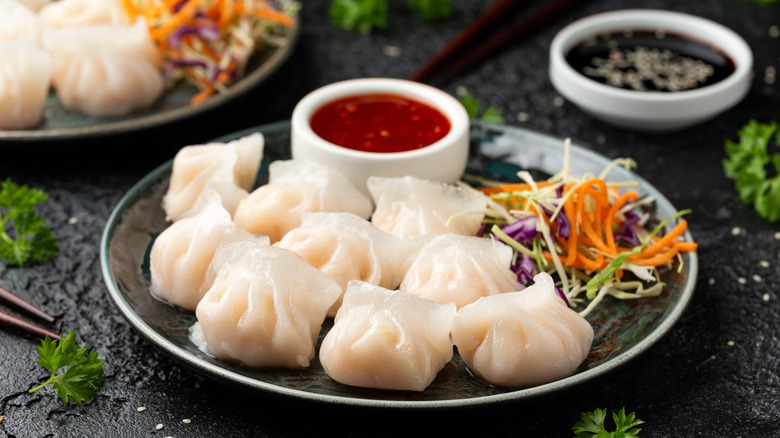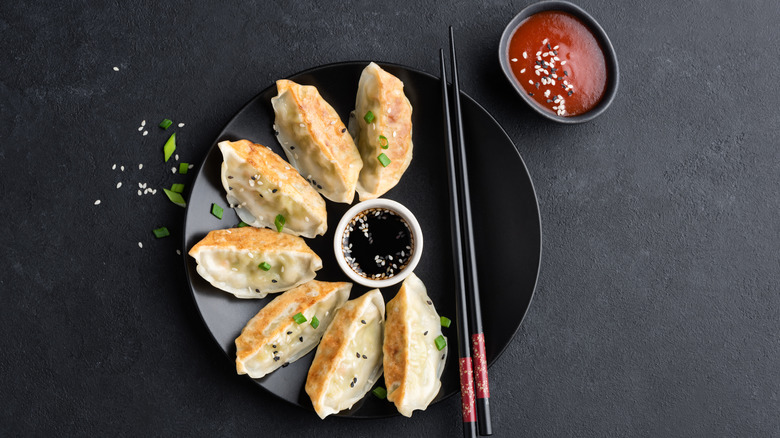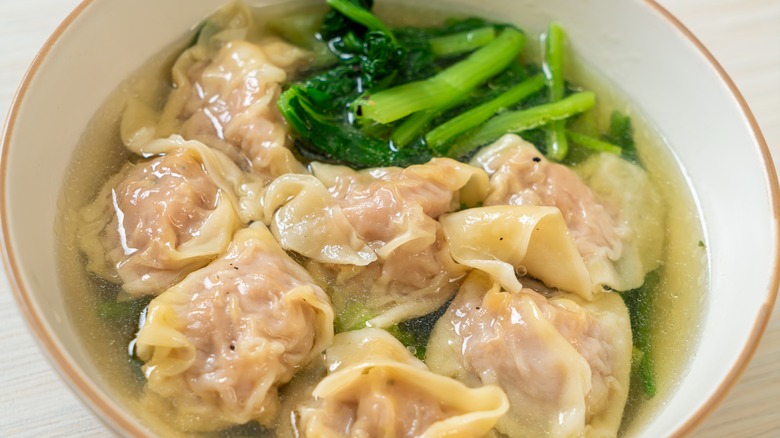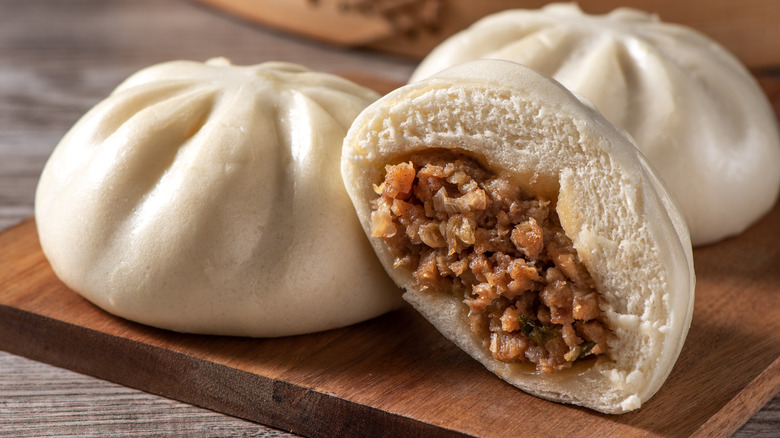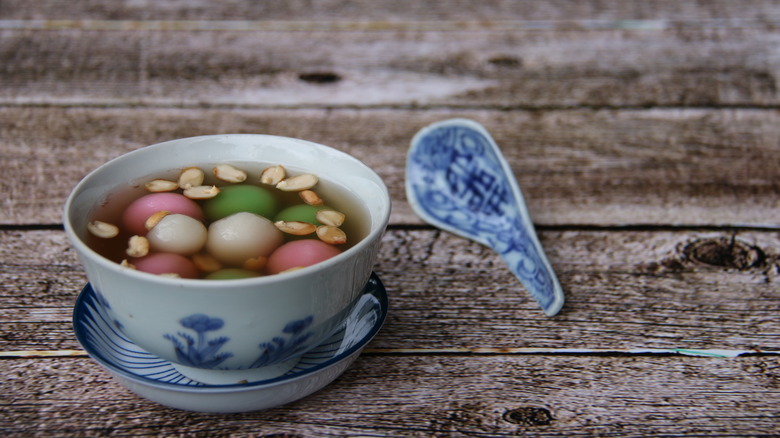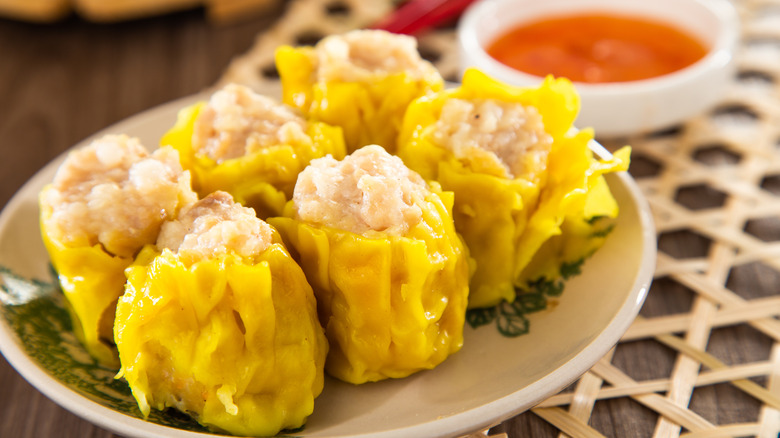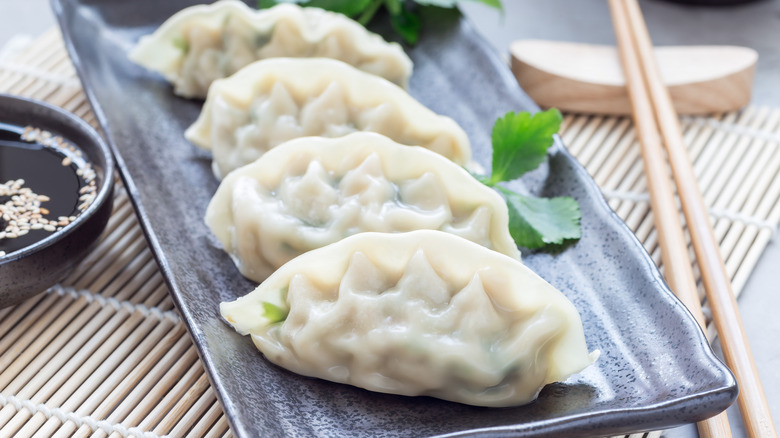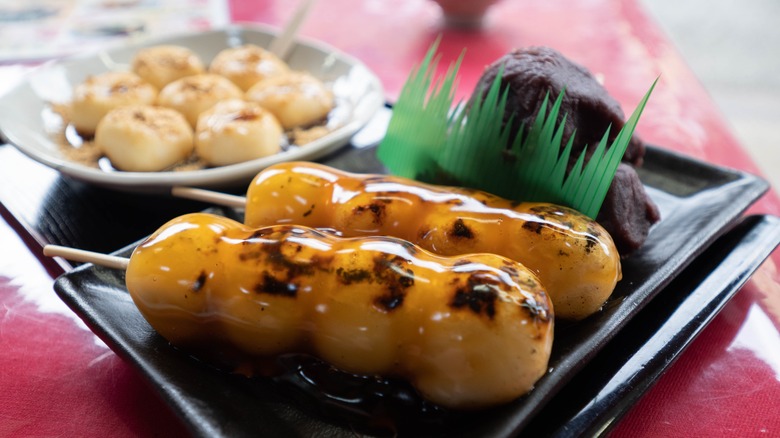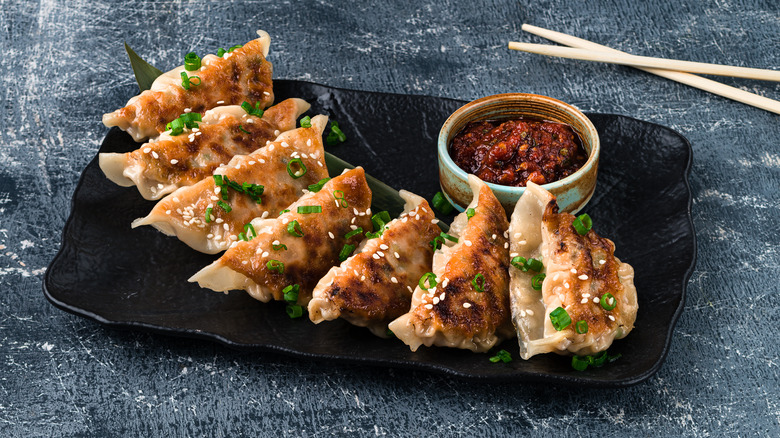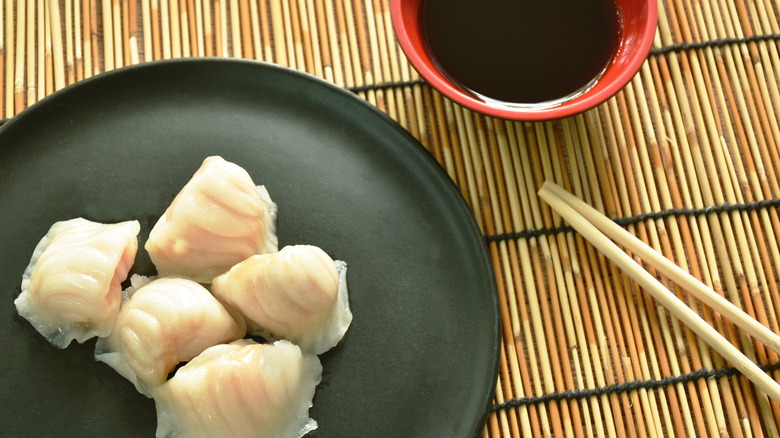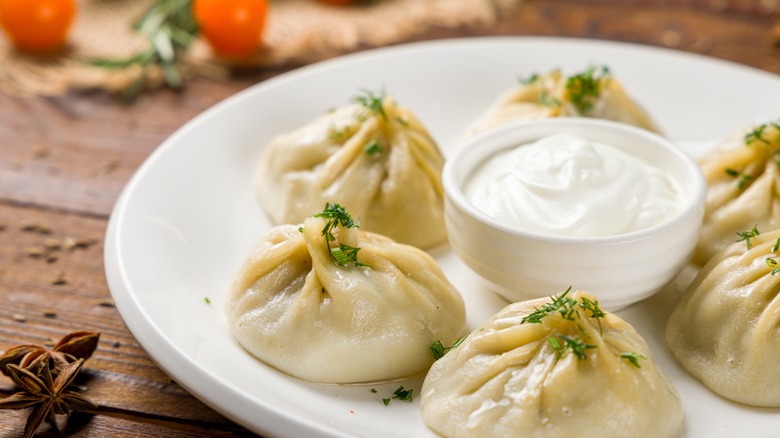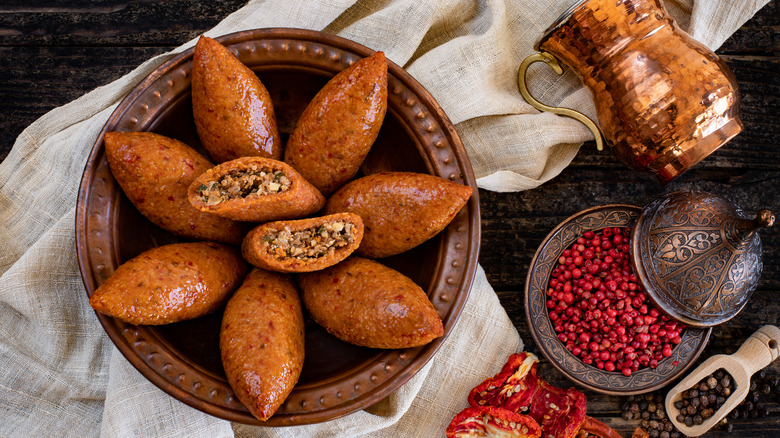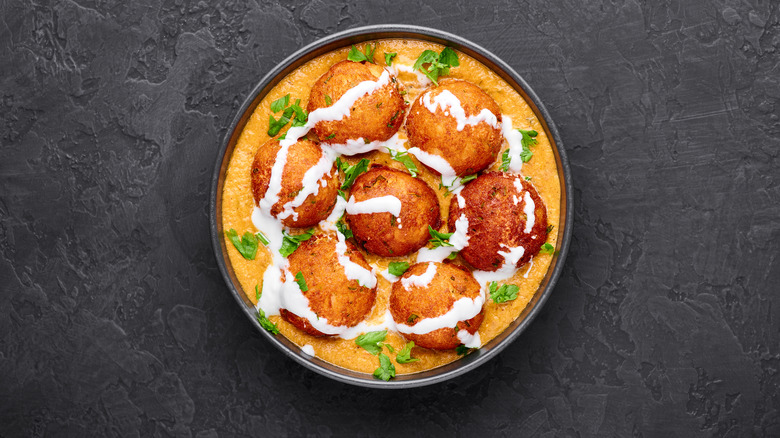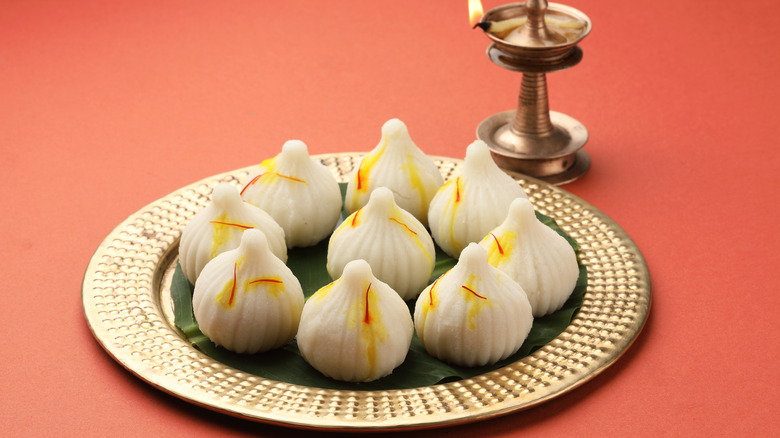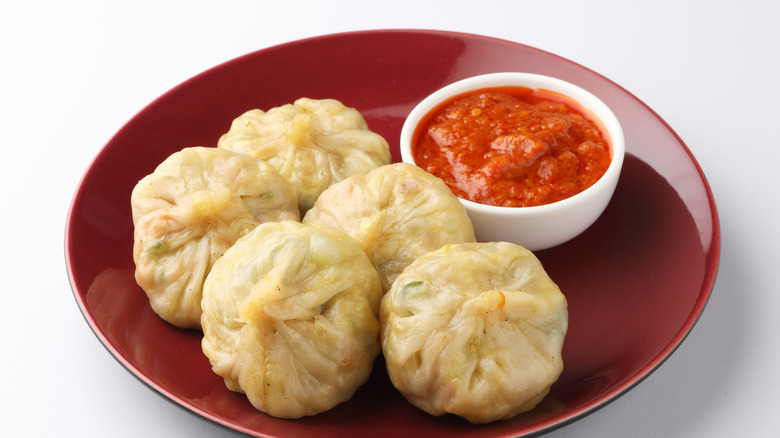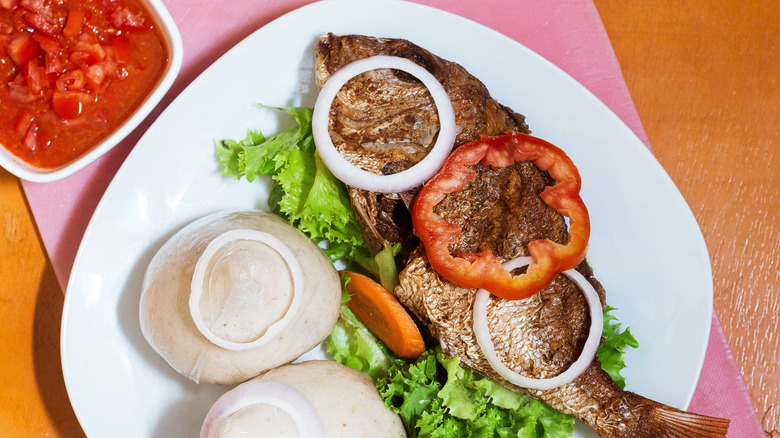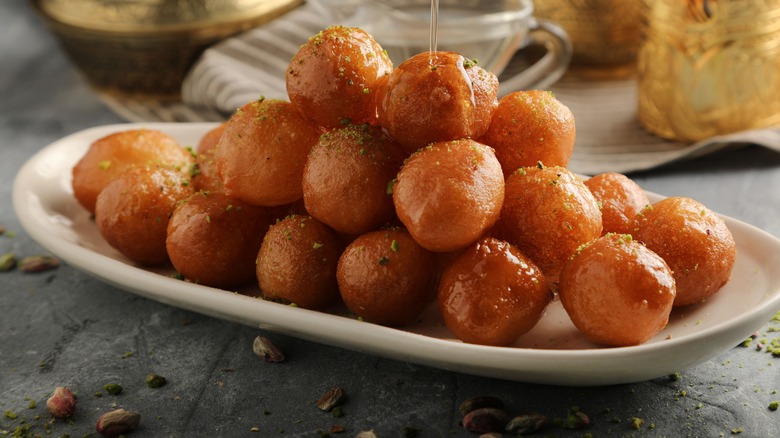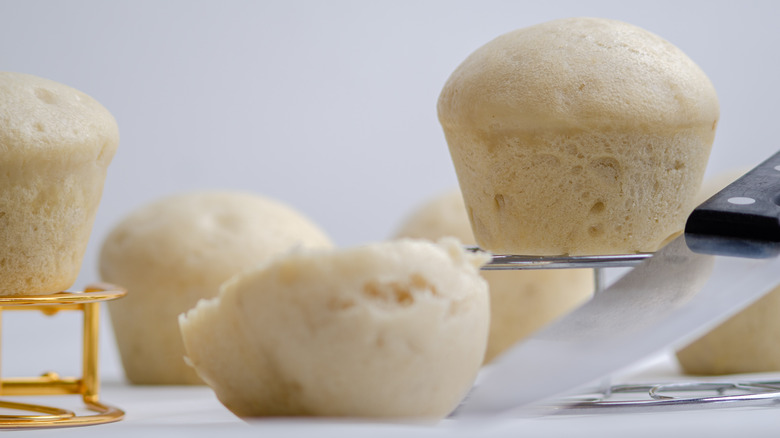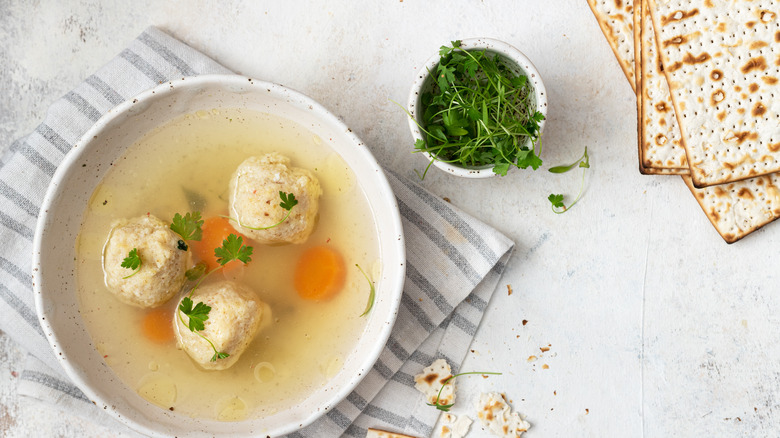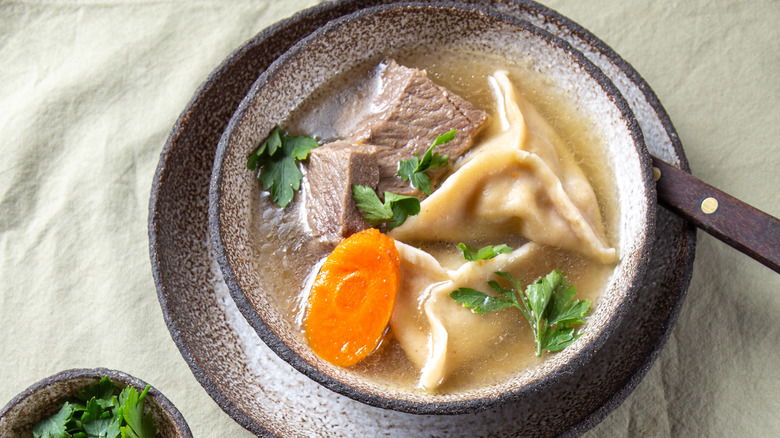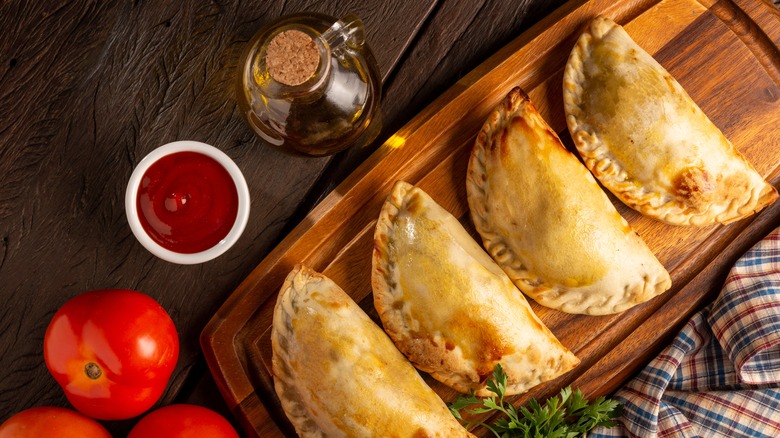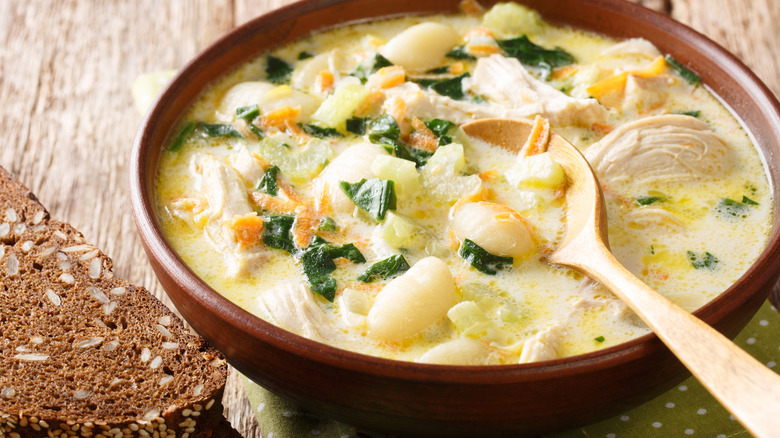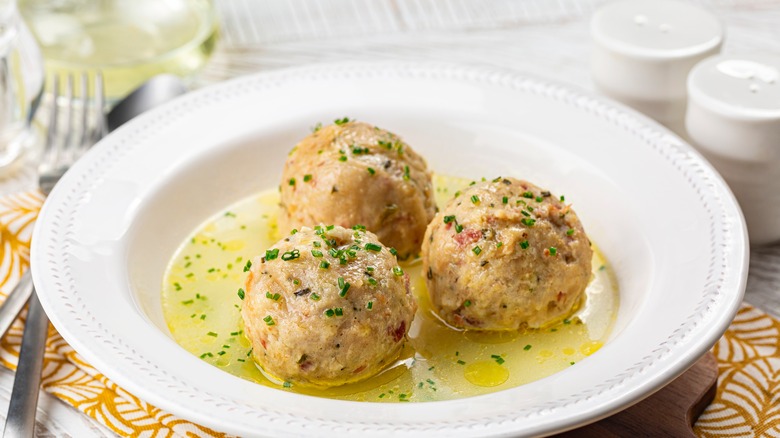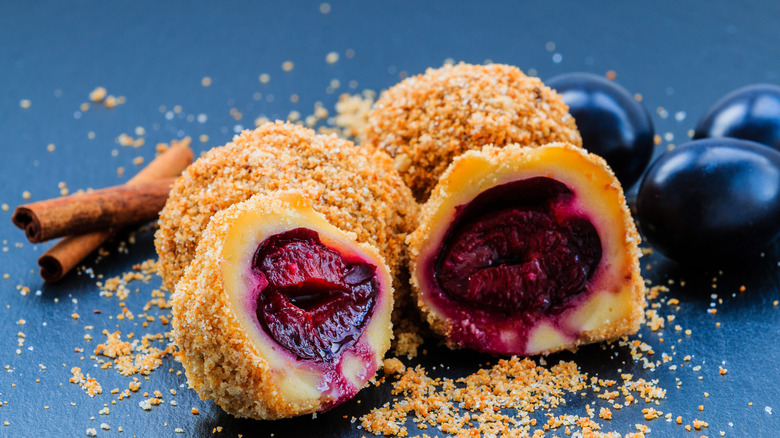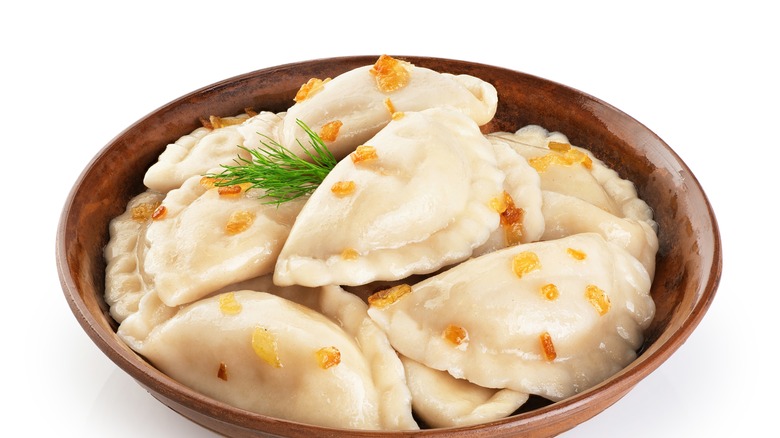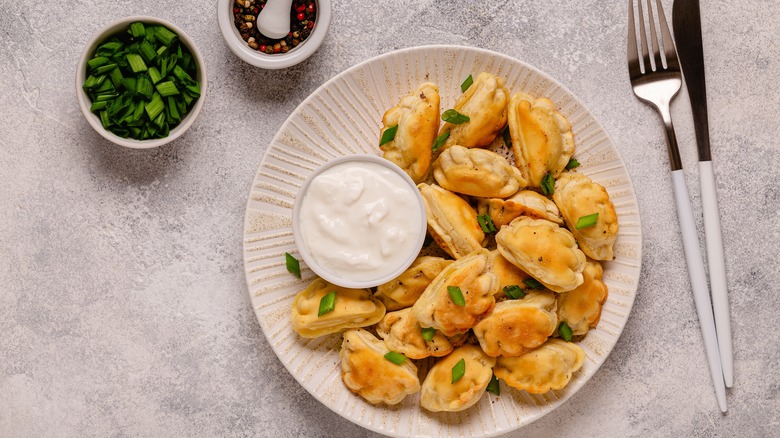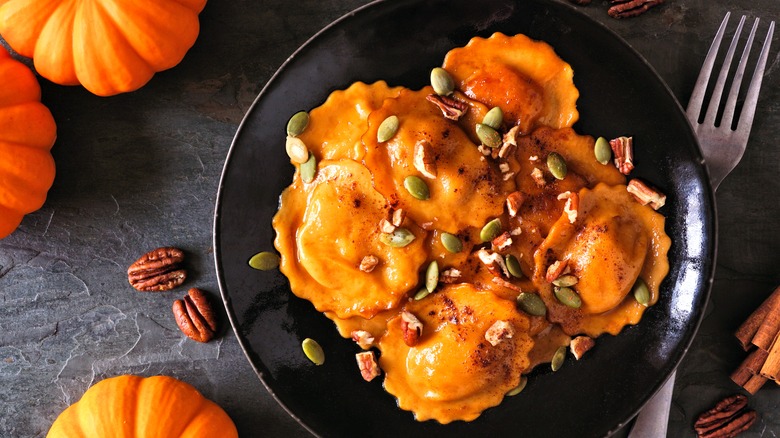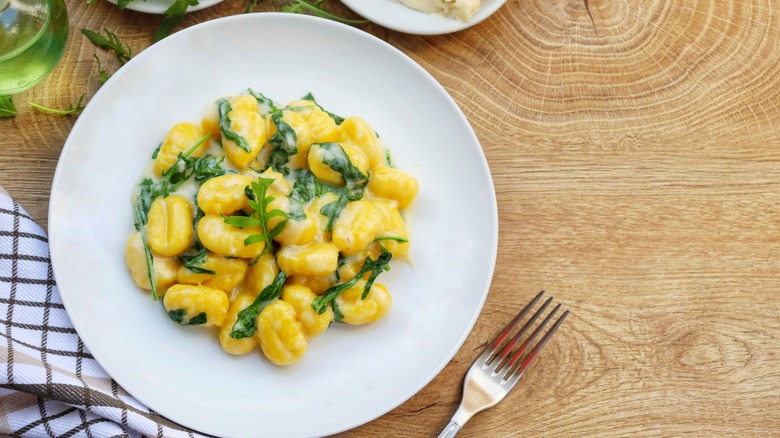29 Types Of Dumplings Explained
What is the definition of a dumpling? The image that may come to your mind may be of dim sum and baskets of shumai, but do not restrict yourself just to Chinese dumplings, as delectable as they are. Dumplings span the world, utilizing different shapes, sizes, and techniques on all continents. In fact, most cultures have some form of dumpling that serves as a staple in their cuisine.
So again, what is the definition of a dumpling? The definition for a dumpling usually entails a pocket of dough stuffed with a filling, but then how do you explain such wonderful dumplings like dango or matzo balls? Therefore, we leave you with this list of dumplings and an appetite to learn more. Not necessarily to learn about the confusing definition of dumplings, but with a hunger to know about the variety and deliciousness that are out there for you to explore.
Xiao long bao
Xiao long bao, also known as soup dumplings and lovingly referred to as XLB by true fanatics, is a dim sum staple. These dumplings, which usually arrive steaming hot in a bamboo basket, are delicate yet chewy and complex. The secret to this dumpling, which originates from the Chinese province of Jiangnan, is in the soup, usually made from pork gelatin and collagen.
When steamed, these gelatinous bits transform into a soup within the dumplings. With ideally 18 pleats and the perfect ratio of meat to dough to soup, xiao long bao are well-loved.
Har gow
Another dim sum staple is har gow. Har gow is not only delicious but also stunningly beautiful. With an almost translucent wrapper and a light pink shrimp filling, har gow are delicate and absolutely divine. The filling, made from shrimp and flavored with oyster sauce, white pepper, and ginger, is fairly straightforward.
The difficult part of this dumpling is in the wrapper. Made from tapioca starch and wheat starch, along with fat and boiling water, getting the proper consistency for the wrapper is a journey, but one that is well worth it.
Jiaozi
These dumplings are iconic and deeply cultural to Chinese cuisine. Usually filled with pork and other seasonings like ginger and scallions, jiaozi can take on many flavors. Regardless of the filling, jiaozi is deeply important to Chinese celebrations, especially Lunar New Year.
The word jiaozi sounds like the phrase "transition from old to new," making them an essential Lunar New Year dish to celebrate new beginnings. Furthermore, the shape of the dumplings resembles gold ingots, making jiaozi also representative of wealth and good fortune.
Wonton
Wontons are another dumpling that hails from China. These wonderful little packets can be filled with all sorts of ingredients, from pork to shrimp to tofu, and are incredibly comforting when floating in a large bowl of wonton soup.
You may know these dumplings best in their soup form — as this is one of the most delicious ways to enjoy them — but they are also wonderful when deep-fried. This method brings delightful crispiness to the wrapper, which makes them chewy, soft, and crunchy.
Baozi
These dumplings, the first on this list that may make you wonder about the definition of dumplings, are made from wheat dough like many other dumplings. However, what sets baozi, also known as bao buns, is that the dough is made with yeast. This means that when the buns are steamed they rise into fluffy bread.
While baozi is often filled with pork, it can be stuffed with anything. In fact, these fluffy dumplings would be fantastic with some chocolate or mushrooms inside, but, of course, not together.
Tong yuan
Ah, so chewy, so sweet, so delightfully warm and comforting; nothing is quite as satisfying as tong yuan. Traditionally, tong yuan are enjoyed for the Lantern Festival, which falls on the 15th and final day of the Lunar New Year.
Consisting of a sweet filling — sesame and bean paste are popular — surrounded by a chewy rice dough, these dumplings would not be complete without the warm soup they are served in. Tong yuan are time-consuming, not to mention sticky, to make, but my goodness, they are delicious once you get it right.
Shumai
Maybe one of the most beautiful and technically difficult dumplings to make, shumai are not all looks — they taste delicious. While an open-faced dumpling may not make sense to some, do not worry, shumai have special powers. The delicate yet firm folding keeps the shumai filling inside, resulting in a gorgeous dumpling that almost resembles a crown.
Made with a wheat wrapper and often filled with either pork or shrimp, shumai is then steamed and served piping hot. Enjoy your shumai with a nice dipping sauce to balance the flavors in the filling.
Mandu
Mandu varies greatly from household to household in Korea. However, while individual recipes may vary, there is a general consensus that everyone loves mandu.
These dumplings, which are commonly filled with pork, can also be filled with vegetables or other meat and delicious cooked in many ways. Maangchi recommends boiling, steaming, or frying any mandu you make. And, of course, if you ever have any leftovers, make sure to freeze them for the future.
Dango
These dumplings are also not exactly what may come to mind when you hear the word dumpling, but that does not make them any less irresistible. Dango, made from rice flour, are small balls of dough that have been rolled and then boiled. But the caveat? They are not filled with anything.
So while you may nix dango from this list of dumplings, they still deserve a taste. Dango is usually served grilled with a sweet soy sauce, and this makes dango the perfect street food and the most satisfying snack.
Gyoza
Gyoza, which resembles Chinese jiaozi, is actually related. Probably the most famous Japanese dumpling, gyoza originated in China and is now enjoyed all over the world, where they are also known as potstickers.
These dumplings, like many others, can be filled with just about anything. Better yet? They can be cooked in multiple ways too. You can steam, deep fry, or pan fry your gyoza. But if you ask us, getting that crispy, alluring brown crust is always the way to go.
Bánh bôt loc
Somewhat similar to har gow, bánh bôt loc also expertly utilizes shrimp to make the most delicious dumplings. Originally from Vietnam, these dumplings celebrate the sea and the land, using wrappers made from tapioca flour and the most delightful combination of shrimp and pork.
The irresistible bounciness and chewiness from the wrappers, combined with the satisfying chew of the filling, make bánh bôt loc one of the best dumplings around. Don't believe us? Guess you will have to go out and try some for yourself.
Mantu
Mantu has a rich history and originates from Afghanistan. Many surrounding countries have similar dumplings, all of which were brought through the silk road by Turkic and Mongol traders.
These dumplings are traditionally filled with beef flavored with onions, cilantro, and coriander. A dollop of filling is then placed in the middle of a square wrapper, and all four corners are brought together into a light pinch at the top. Before being devoured, mantu are best dipped in a yogurt sauce which brings both creaminess and tang.
Kibbeh
Kibbeh is the first dumpling on this list to be made without dough — if that makes any sense. To explain, kibbeh is similar to croquettes, with a crunchy outer layer that has been deep-fried.
The "dough" part of kibbeh is made from bulgar wheat mixed with ground beef or lamb. These dumplings are perfect for any meat lovers because then the meat bulgar dough is stuffed with more meat cooked down with onions and pine nuts. The kibbeh is then deep fried and enjoyed as a delicious snack or appetizer.
Malai kofta
Malai kofta starts out crispy, warm, and irresistible, and over time becomes even more irresistible. These dumplings, which are also not filled, but are no less delicious, are balls of paneer, vegetables, and potato that are deep-fried. They are then soaked in a gravy sauce, usually one that is incredibly creamy and rich.
Malai kofta, which hails from north India, is the perfect comfort food to accompany rice or naan.
Modak
Another dumpling from India, modak is perhaps the perfect way to end a meal. These dumplings, which come from the west Indian state of Maharashtra, are made from steamed rice flour that is filled with jaggery and coconut.
They are sweet, chewy and have a delightful bite thanks to the shredded coconut. On top of that, the jaggery, also known as raw cane sugar, brings a wonderful caramel flavor to the modak, making the whole dessert absolutely delicious.
Momo
These dumplings, which are very beloved in Nepal and surrounding areas, are wonderfully chewy and pair perfectly with a spicy achar sauce. Momos, which can be stuffed with anything, are most often filled with buffalo meat and aromatics like ginger and garlic.
What makes momos so irresistible is their all-purpose flour wrapper that becomes dense and chewy after steaming and the flavor combination of filling with achar sauce. Achar sauce is made from tomato, chilis, ginger, garlic, and cumin.
Banku
Banku, fairly similar to fufu, is a dumpling made from fermented corn and popular in west Africa, specifically Ghana. These delightful dumplings are labor-intensive to make, but when served alongside okra stew or a piece of grilled fish, the soft corn completes the meal.
To make banku, you start by fermenting the corn for 2-3 days, then grind it into a dough, and finally roll it into balls and steam it for eating. The sour taste of the dough, which comes from the fermentation, ensures that it pairs wonderfully with savory and spicy stews.
Kaimati
Who doesn't love a ball of fried dough? Just about everyone does, and during Christmas time in Kenya, these dumplings, kaimati, are a staple. Made from wheat flour and baker's yeast, these dumplings resemble yeast doughnuts but are slightly denser thanks to their shorter rising time. Once the balls are fried, they are soaked in cardamon and vanilla syrup before being devoured in the true holiday spirit.
These dumplings are sweet, chewy, indulgent, and downright irresistible.
Dombolo
Dombolo means dumpling in Spanish, but in South Africa, where these dumplings originate, the final food is considered much more of a steamed bread or bun. These buns are made with wheat flour and yeast and are commonly eaten for breakfast.
In Zulu tradition, it is also common to see dombolo eaten on top of stews. The dombolo, in this case, are called ujeqe, and are delicious when served with a savory bean stew called ubhonsisi.
Matzo balls
Matzo balls make for the ultimate comfort meal. These soft, squishy, and slightly chewy dumplings, found in a warm and comforting broth, are a staple Jewish food. Most commonly made for Passover, matzo balls are a way to honor the Jews who had to flee Egypt with no time to let their bread rise.
How is that related to matzo? Well, matzo balls are made from matzo meal, which, surprise, surprise, is made from matzo, an unleavened wheat bread. Today, these dumplings and matzo ball soup are so wonderfully comforting that they are like a big hug.
Kreplach
Kreplach resembles other soup dumplings — think wontons or even mandu — but what sets these wonderful Jewish dumplings apart is their dough. The wrappers are generally made with pasta dough, making the final dumplings very similar to other types of stuffed pasta, such as agnolotti. However, with any age-old recipe, kreplach varies from family to family and region to region.
While chicken is a popular filling, other versions may feature vegetables, brisket, or even cheese. If not eaten in a soup, they are often topped with sour cream and can even be garnished with nuts for additional texture.
Empanada
The empanada is one of the most divine versions of hand pies. Filled with anything from meat to cheese to corn and then either baked or deep fried, these dumplings are delectable with their crunchy crust and soft filling. While the origins of empanadas are Spanish, today, empanadas are most associated with South and Central American cuisine.
You can find empanadas in markets, grocery stores, on the street, and in many households, being served for a meal or snack. The flakey pastry combined with a salty, chewy inside makes these little pockets absolutely irresistible.
Drop dumplings
Somewhat like matzo balls, drop dumplings consist of dumplings that are served in a soup, most commonly chicken soup. And how do you make them? Just as their name suggests, drop dumplings entail dropping the dumpling dough into your simmering soup. Then, after only a few short minutes, your comforting and delicious meal is ready to be enjoyed.
However, unlike matzo balls and other soup dumplings, drop dumplings tend to sit on top of the soup. This can be attributed to the thicker soup that drop dumplings are usually placed into.
Semmenlknödel
Yet another dumpling that resembles both matzo balls and drop dumplings, German semmenlknödel, also known as German bread dumplings, are oh-so comforting and delicious. A specialty from Bavaria in southern Germany, these dumplings are made from stale bread, eggs, onions, butter, and parsley.
If this sounds a little bit like thanksgiving stuffing, then you're right on. These little balls utilize stale bread expertly, transforming it from a rock into something delicious. An even more decadent version, called speckknödel, includes bacon and is tastiest topped with gravy.
Zwetschkenknödle
Right next door to Germany, the Austrians have been whipping up these stunning dumplings for centuries. Unlike the other dumplings on this list, zwetschkenknödle is not only sweet; they actually contain a whole plum. That's right, to make these dumplings, you simply take the pit out of the fruit and then wrap the whole thing in a buttery dough.
The final dumplings can range in size, considering that plums do as well and are striking as well as delicious. When you cut into a zwetschkenknödle, the vibrant purple from the plums (unless you use yellow plums) is a show stopper.
Pierogi
As one of the most beloved dumplings worldwide, who could be upset with pierogi? A beautiful combination of wheat, meat, potatoes, and sour cream, pierogies are an ode to starch in the form of incredibly savory comfort food. Originating from Poland, with look-alikes in Ukraine, Russia, and other eastern European countries, pierogi are loved for their simplicity and heartiness.
Usually filled with potato, cheese, meat, or a combination of all three, these beloved dumplings would not be complete without a dollop of sour cream and some sweet, caramelized onions on top.
Vareniki
Vareniki are very similar to pierogi but originate from Ukraine, where they are usually eaten with sour cream, butter, and fried onions. To top it off, some versions include bacon for an additional layer of indulgence. They are often folded with intricate pleating around the edge, which adds a layer of refinement to these delicious dumplings. These dumplings are enjoyed all year round but are especially popular for Christmas Eve dinner.
Ravioli
Ravioli is a beautiful word that rolls off of the tongue and a beautiful food that has taken over the world. These stuffed kinds of pasta, which can come in a variety of sizes and even shapes, have endless possibilities in regard to fillings. Do you prefer cheese, squash, meat, or spinach? You can choose any or all of the above with this versatile and satisfying pasta. Made with pasta dough and then boiled and tossed in a sauce of your liking, ravioli truly is a fan favorite and for a good reason.
Gnocchi
Gnocchi has a similar chew to dango and pairs beautifully with cream like ravioli and is a celebration of wheat and potatoes like pierogi. Usually made with potatoes and wheat flour that are kneaded together into a dough, gnocchi are so wonderfully chewy and dense that they satisfy even the pickiest.
The best part? These Italian dumplings are incredibly versatile and pair well with almost any sauce or cheese. They are also very fun to make and that much more satisfying to eat when they are the fruits of your labor.
